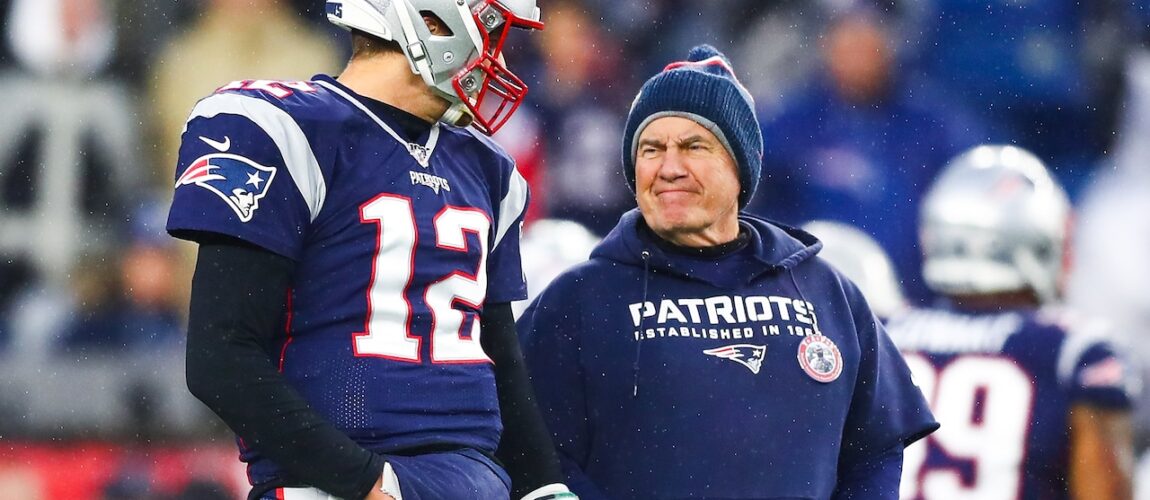
Poor clock management has become an epidemic in the NFL.
The latest example was Sunday Night Football in Washington. With the Falcons driving for a potential game-winning field goal, Raheem Morris had two timeouts. When Falcons quarterback Michael Penix hit Darrell Mooney for a 25-yard gain near midfield, the whistle blew with 34 seconds left. Morris opted not to use one of his timeouts and the clock ticked down to 17 seconds before the next snap. Ultimately, Atlanta couldn’t get close enough for a game-winning field goal and the Falcons lost in overtime. Morris ended regulation with a timeout in the pocket.
On the Pat McAfee show on Monday, Bill Belichick called the mismanagement of the clock “mystifying” and then offered a fascinating deep dive into how Tom Brady changed his late game approach.
Belichick’s basic approach was simple. If your team had three timeouts on the two-minute warning, you would want to use the first between 2:00 and 1:00, the second between 1:00 and 0:30, and the last between 0 :30 and 0:00.
“That wasn’t an absolute rule, but it was a rule of thumb,” Belichick said. “You really didn’t want to have two timeouts with 20 seconds left and you didn’t want to use two of your timeouts in the first 30 seconds of a two-minute situation where you didn’t have to … so you get to the last 30 seconds and the decision really is: do you save the (final) timeout for last?”
Belichick said that in 2013 or 2014 he had a conversation with Brady and patriots offensive coordinator Josh McDaniels who changed the way he would deploy that final timeout moving forward.
“I always wanted to save it for last,” Belichick said. “Especially if you need a field goal, so you don’t have to run the field goal team without concentration. You could take a timeout and go in there and kick it. But Brady said, ‘Look, I’d rather have more time and less downtime because it gives me more options than less time and downtime.” So let me handle it. If I screw it up, it’s my fault and you can take it away from me. But I’d rather that you have a downtime with 27 seconds and you give me more time to do something than run a play with 27 seconds and now we go to 13 seconds and have a timeout. I’d rather have 27 seconds and no timeout than 12 seconds and a timeout.
“It brings a lot of responsibility to the quarterback, but Tom wanted it and I felt very confident in giving it to him. So basically, we made that change. I took this third timeout many times in the 30 second range even though it had gone a bit against my previous thinking, because Tom felt more comfortable running the game this way and he did very well. So I was more than happy to give him that responsibility because he could handle it.”
- BETTING: Check out our MA Sports Betting Guidewhere you can learn basic terminology, definitions and how to read the odds for those interested in learning how to bet in Massachusetts.

